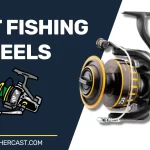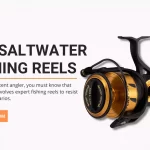Many fishermen wanting to break into that area of the fishing industry find it intimidating to learn how to cast a baitcasting reel. In all honesty, you will discover that it is not that difficult to master with a little practice. The type of line you are spooling onto your reel is one of the things that will reduce the amount of time it takes to go over the learning curve. We shall discuss the best fishing line for baitcaster in this section.
If you are a beginner and looking for affordable baitcasting reels you should check out the best baitcasting reels under $100!
Contents
Why Fishing Line Is Important When It Comes To Baitcasting?
Fishing line is important when it comes to baitcasting for several reasons especially when anglers invest in expensive and best baitcasting reels for fishing and they want the best of both worlds.
Casting distance: The type of fishing line used can affect the casting distance. Baitcasting reels are designed to cast heavier lines than spinning reels, and a thicker line can be cast further due to its weight.
Sensitivity: Fishing plays an important role in detecting bites and feeling the movements of the lure or bait. A sensitive line can help the angler feel the slightest nibble, allowing them to set the hook at the right moment.
Strength: The fishing line must be strong enough to handle the weight of the fish being caught. Baitcasting reels are often used for catching larger fish, so a strong line is essential to prevent the line from breaking during the fight.
Abrasion resistance: Fishing lines can be damaged by rocks, logs, and other underwater obstacles. Abrasion-resistant lines can withstand these hazards and reduce the risk of line breakage.
Visibility: In clear water or when fishing for wary fish, the visibility of the fishing line can be important. Choosing a low-visibility line can help prevent the fish from being spooked by the line, hence it affects the baitcaster line.
Types of Fishing Lines for Baitcasting Reels
Baitcasting reels are popular among anglers who want precision, control, and accuracy when fishing. However, the performance of these reels is greatly affected by the type of fishing line used. Let’s go through the different types of fishing lines for baitcasting in detail:
Monofilament Line
The monofilament fishing line is one of the most popular types of fishing lines used by anglers around the world.
Key Features of Monofilament Line:
- Stretch: One of the most notable features of the monofilament line is its stretch. This means that when a fish bites or pulls on the line, the line will stretch, absorbing some of the shocks and reducing the chance of the line breaking. The amount of stretch in the monofilament line can vary depending on the brand and the diameter of the line.
- Diameter: Monofilament line comes in a range of diameters, from very thin (e.g., 2-pound test) to very thick (e.g., 100-pound test). The diameter of the line can affect its strength, casting distance, and sensitivity.
- Visibility: Monofilament line is generally more visible than other types of fishing lines, such as fluorocarbon or braided lines. This can be an advantage in certain fishing situations, such as when fishing for species that are attracted to bright colors or when using topwater lures.
Advantages of Monofilament Line:
- Easy to Handle
- Forgiving
- Versatile
Disadvantages of Monofilament Line:
- Memory
- Stretch
- Durability
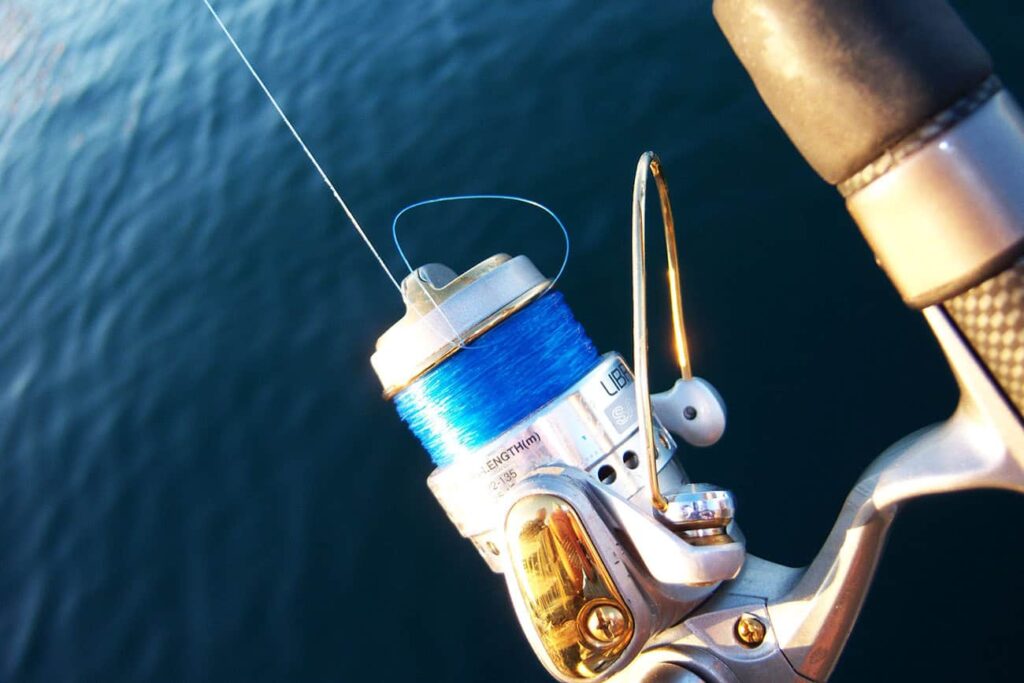
Fluorocarbon line
Fluorocarbon fishing line is a type of fishing line that is sometimes considered the best fishing line for baitcasting reels under some conditions in recent years due to its many advantages over other types of fishing lines.
Key Features of Fluorocarbon Line:
- Invisibility: One of the most notable features of the fluorocarbon line is its invisibility in the water. This means that it is less likely to spook fish and can increase your chances of getting a bite. The refractive index of fluorocarbon is similar to that of water, making it nearly invisible to fish.
- Sensitivity: Fluorocarbon line is generally more sensitive than other types of fishing lines, such as monofilament. This means that you can feel even the slightest bite or nibble on your line, allowing you to react quickly and set the hook.
- Abrasion Resistance: Fluorocarbon line is more resistant to abrasion than other types of fishing line, such as monofilament or braided lines. This makes it a good choice for fishing in areas with rocks, logs, or other types of structures that can damage your line.
Advantages of Fluorocarbon Line:
- Invisibility
- Sensitivity
- Abrasion Resistance
Disadvantages of Fluorocarbon Line:
- Stiffness
- Price
- Susceptibility to Memory
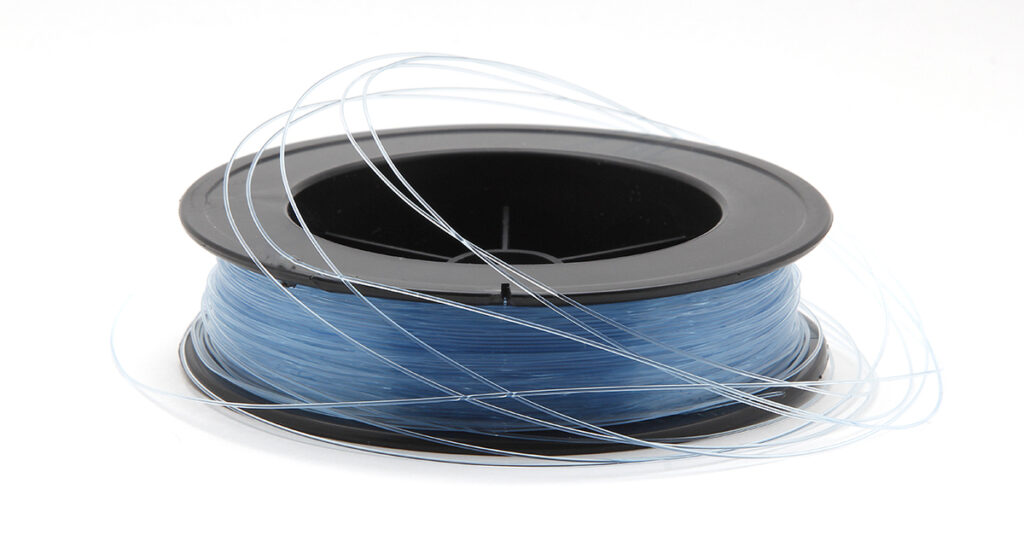
Braided line
Braided fishing line has been around for many years and is a popular choice for anglers because they take the braided line as the best line for baitcaster reels due to its many advantages over other types of fishing lines. And is considered one of the best lines for baitcaster reels.
Key Features of Braided Line:
- Strength: Braided line is made up of multiple strands of fibers, typically made of high-strength materials such as Spectra or Dyneema. This gives it a much higher strength-to-diameter ratio than other types of fishing lines such as monofilament or fluorocarbon. This strength can allow you to use lighter lines while still maintaining the ability to catch larger fish.
- Sensitivity: Braided line is generally more sensitive than other types of fishing line, such as monofilament or fluorocarbon. This means that you can feel even the slightest bite or nibble on your line, allowing you to react quickly and set the hook.
- Abrasion Resistance: Braided line is more resistant to abrasion than other types of fishing lines, such as monofilament or fluorocarbon. This makes it a good choice for fishing in areas with rocks, logs, or other types of structures that can damage your line.
Advantages of Braided Line:
- Strength
- Sensitivity
- Durability
Disadvantages of Braided Line:
- Visibility
- Lack of Stretch
- Knot Tying
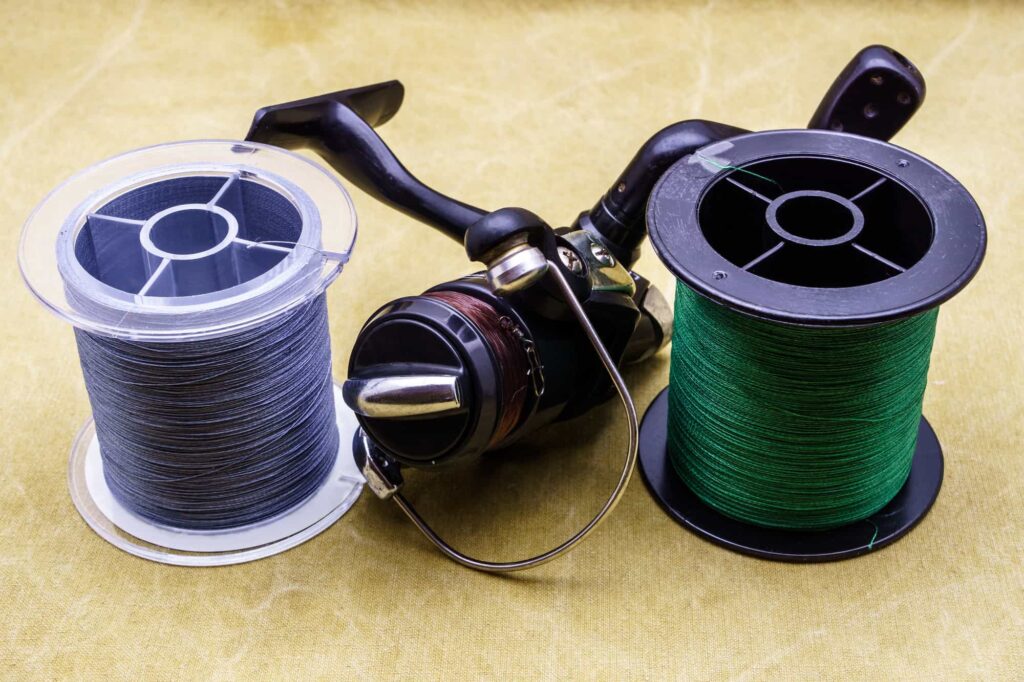
Hybrid Line
A hybrid fishing line is a combination of two or more types of fishing lines that are fused together to create a line that incorporates the best features of each individual line just like creating baitcasting combos to get the best fishing experience. This type of fishing line has become one of the best lines for a baitcaster in recent years due to its many advantages over traditional mono, fluorocarbon, or braided lines.
Key Features of Hybrid Line:
- Combination of materials: Hybrid line is made by fusing two or more different types of fishing lines together. The combination of materials can create a line that has the best features of each individual line, such as the sensitivity of fluorocarbon and the strength of the braided line.
- High strength: Hybrid lines are generally stronger than mono or fluorocarbon lines of the same diameter, making them a good choice for targeting larger fish species.
- Low stretch: Hybrid lines have less stretch than mono lines, which can improve hook sets and increase sensitivity.
Advantages of Hybrid Line:
- Versatility
- Strength
- Abrasion resistance
Disadvantages of Hybrid Line:
- Price
- Knot strength
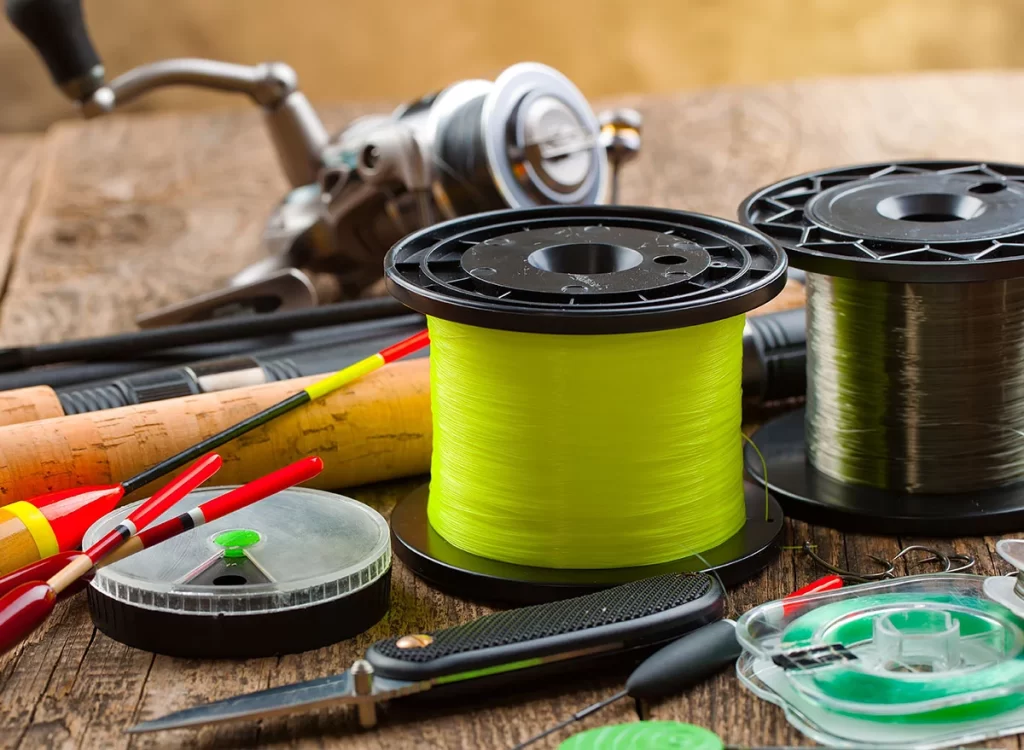
Factors to Consider While Choosing Baitcaster Line
Fishing Conditions: Consider the fishing conditions you will be fishing in while choosing the best fishing line for baitcaster, such as the type of water, depth, and weather conditions. Thicker and stronger fluorocarbon lines may be needed for fishing in rough or deep waters, while thinner lines may be more suitable for clear or shallow waters.
Species of Fish: Consider the species of fish you will be targeting. Some species may require thicker and stronger lines, while others may be caught on lighter lines, the same as we do while choosing the best fishing reels.
Fishing Technique: Consider the fishing technique you will be using, such as trolling, jigging, or casting. Different techniques may require different types of lines, such as lines with more or less stretch, or lines with higher or lower sensitivity.
So, What Is The Best Fishing Line For Baitcaster?
In conclusion, the best line for baitcasting reels depends on the fishing conditions, the type of fish being targeted, and the angler’s experience. Monofilament lines are great for beginners and anglers on a budget, while fluorocarbon lines are great for fishing in clear water and catching wary fish. Braided lines are great for strength and sensitivity, while hybrid lines offer the best of both worlds. Anglers should choose the line that best fits their needs and preferences.
You can also use round baitcasting reels in contrast to normal baitcasting reels in order to acquire a different experience.

Hi, I am David. I have founded THE FISHER CAST because I believe everybody deserve to do fishing smartly. I with my team are here to make this possible for our present and future generations by giving the best hands on practical experiences and reviews.

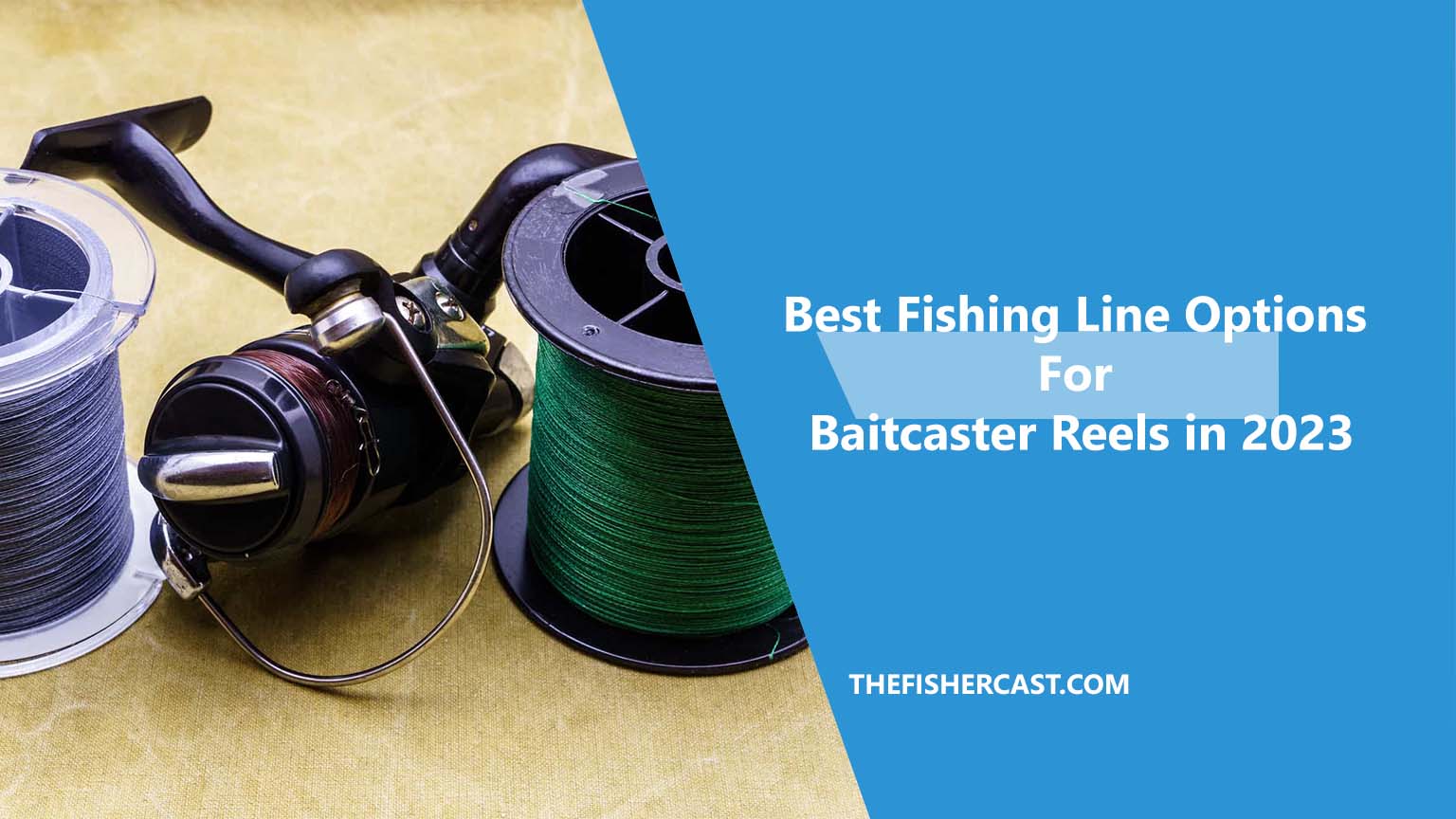
![10 Best Spinning Reels Under $100 [2023 Reviews] Best Spinning Reels Under 100](https://thefishercast.com/wp-content/uploads/2022/01/Best-Spinning-Reels-Under-100-150x150.webp)
![10 Best Line Counter Reels [2023 Buying Guide & Reviews] Best Line Counter Reels](https://thefishercast.com/wp-content/uploads/2022/02/Best-Line-Counter-Reels-150x150.webp)
![10 Best Trout Spinning Reels [Reviews and Buying Guide 2023] Best Trout Spinning Reels](https://thefishercast.com/wp-content/uploads/2022/02/Best-Trout-Spinning-Reels-150x150.webp)

